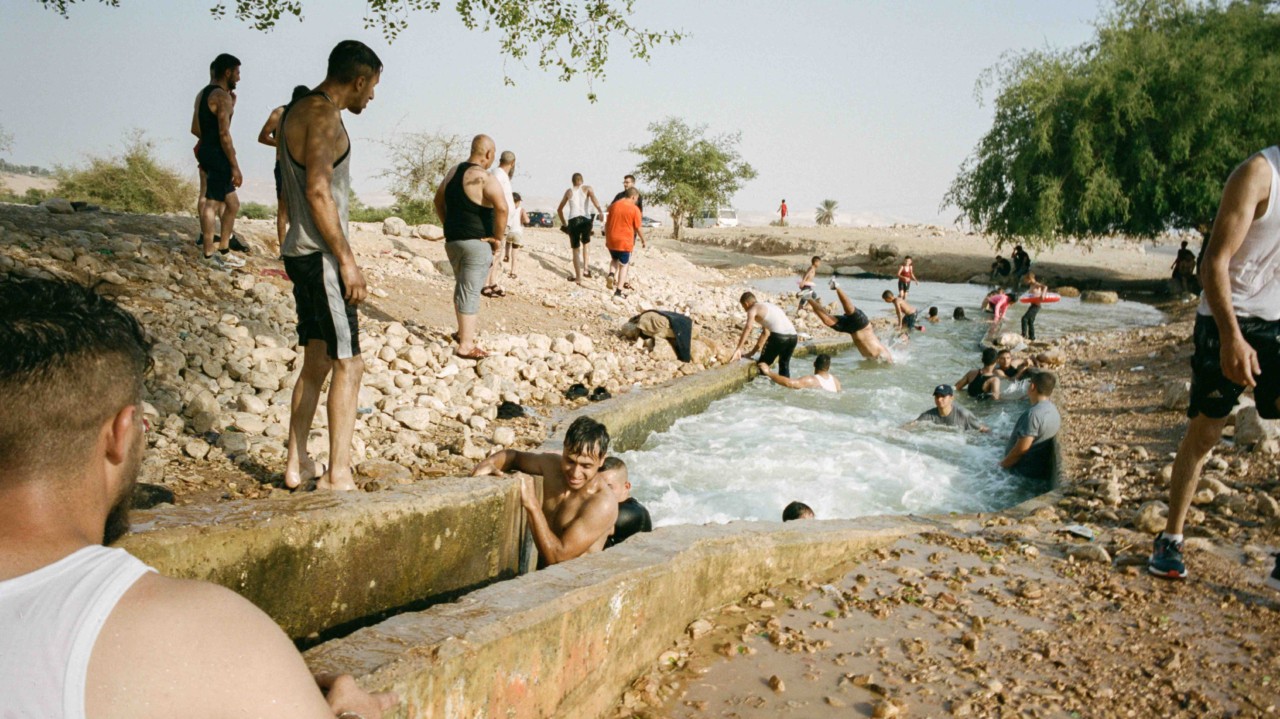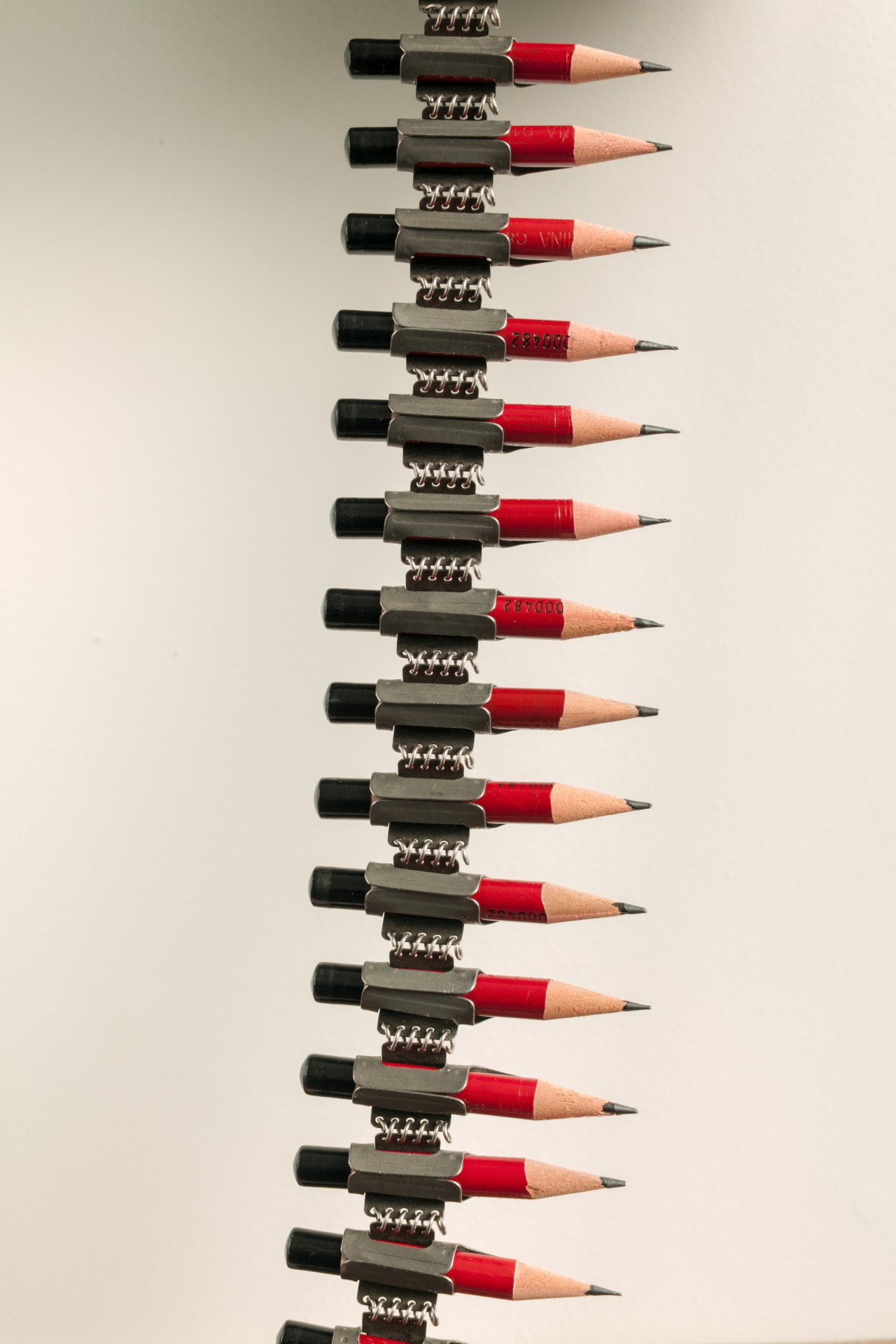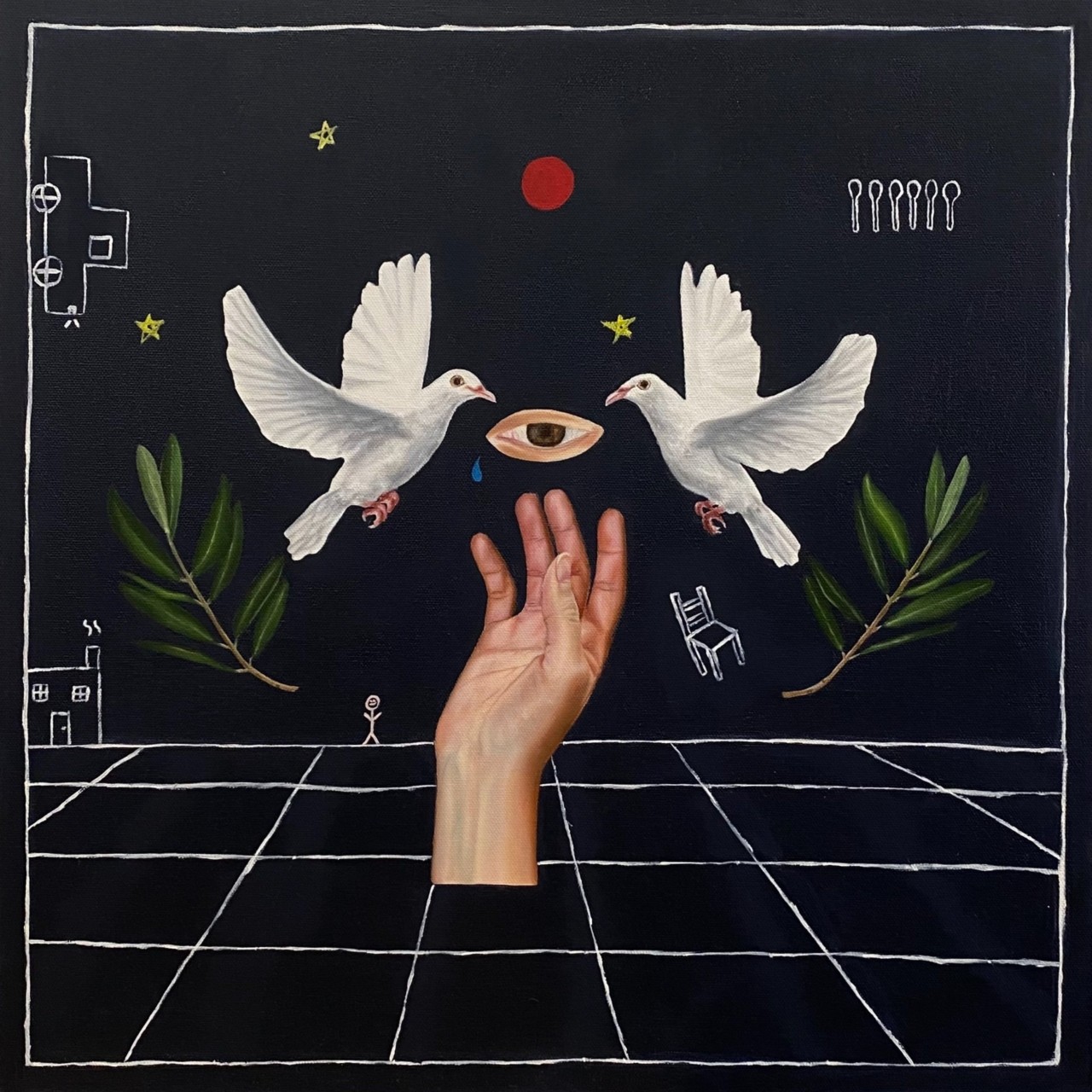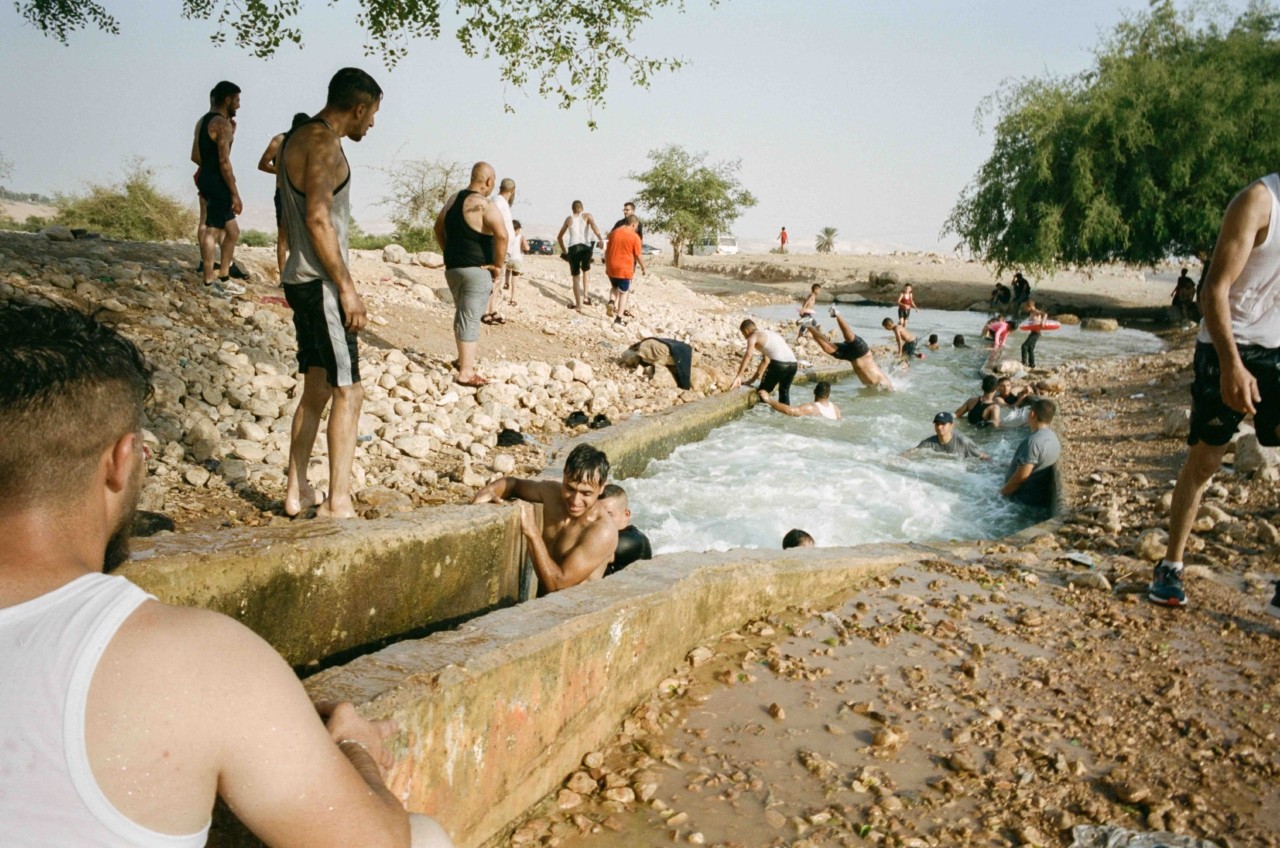

"Untitled, 2015" by Taysir Batniji
Words by Atef Alshaer
Atef Alshaer was born and raised in the Gaza Strip. He is a poet, translator, and associate professor in Arabic language and culture at the University of Westminster. This Points of View article reflects his opinions, not necessarily those of Atmos.
Societies treat their environment in ways that either lead to its prosperity and vitality or its distortion and potential destruction. In the Middle East, whether it be Gaza or Lebanon, the ongoing cycle of extreme violence—driven by Israel’s use of advanced weaponry for domination—paints a picture of grim portent for humanity.
As of April, six months ago, over 75,000 tons of toxic explosives have been dropped on an area of 365 square kilometers, teeming with a population forced to live on ever-shrinking land depleted of resources. The situation has only worsened since. The landscape of Gaza is unrecognizable due to the systematic destruction of houses, plants, trees, and even animals, such as horses and sheep. Gaza has had no respite from the toxic plumes of smoke spiraling up when planes loaded with explosives target houses and other infrastructures. It’s why Gaza’s shrinking livable spaces are crowded with people living in unhygienic shelters, surrounded by sewage and other sources of contamination and illness.
Over 41,000 people are estimated to have been killed by Israel’s war on Gaza. Earlier this summer, The Lancet, a well-respected medical journal, projected 186,000 deaths could be attributable to Israel’s siege, from direct and indirect causes, including food shortages, lack of medical care, and disease outbreaks.

Against this backdrop of unimaginable suffering, it has been extraordinary to see the Palestinians living in Gaza tap into their culture to remember and evoke their environment and lives before this relentless onslaught.
One constant practice has been the remembrance of Gaza through images as it existed before: the blue skyline, the olive and palm trees, the mostly white-painted houses, the mosques and historic sites, all evocatively, somehow, facing the Mediterranean Sea in an ever-warm, glowing embrace. This is notwithstanding the grim prospects of violence and destruction that have sunk people’s lives into destitution.
Since 1948, when Israel was established and over 500 Palestinian villages were destroyed, Palestinians have turned to art—poetry, novels, paintings and more recently, photography and films—to evoke and preserve their existence in their homeland. Art is a safe space born from a lost refuge; it is a means of rebuilding a recognizable home and landscape; it is an imaginary approximation to the nature that once defined their life.
Despite its ubiquity, photography captures moments and gives them permanence. In the context of Gaza, this is an act of resistance. Photography has come to signal nostalgia for times lost and futures beleaguered by momentous dangers as Palestinians continue to suffer killing and destruction on an unimaginable and unprecedented scale at the hands of a ferocious, unleashed colonial Israel. It also plays a role in reimagining the future. Through recording, remembering, and bearing witness to history, photography can help build new worlds where the homeland and its people are free.
The most iconic Palestinian poet, Mahmoud Darwish (1941-2008), portrayed and embodied Palestinian sensibility in relation to the lost homeland best. After the Israeli siege of Beirut in 1982, he wrote a poem that opens with the lines: “The earth closes on us/ pushing us towards the last passage… we wish we were its wheat/ to die and live again/ we wish the earth were our mother/ to have mercy on us.”
"A Crack in the Water Followed by Return" by Dima Srouji
Darwish is not alone in the representation of his people as tied—physically, emotionally, socially—to the Earth. Palestinian artists have often painted their land in ways that reflect their innermost feelings; from the paintings of Rashid Anani and Vera Tamari that depict olive and orange trees atop sunkissed hills lovingly attended to by Palestinian men and women, to paintings that searingly reflect the pain and traumas inflicted on them and the landscape by young Gazan artists like Dina Matar. The paintings are a reminder that the Earth’s ecosystems are interconnected and indivisible. Its air, water, fauna, and flora contribute to the health of us all. But in Gaza, the ongoing attack is fueling rising temperatures and explosive substances are exacerbating ecological deformity.
Time and again, art has remained a safe staple, a secure reference point, that people take refuge in to record their presence and voice their predicament to the world.
In Gaza, as Israel carries out constant destructive incursions while cruelly forcing the Palestinians to vacate their tents after many of their houses have been reduced to rubble, people keep asking, “Where shall we go—wayn bidna nruuh?” This is said repeatedly as bulldozers and tanks emerge and start mangling their meager dwellings.
It starkly contrasts what Palestinian artists know to be true about the expansiveness of the Earth and its giving nature. Islamic teachings, as emphasized in the Qur’an and other seminal Islamic sources, state that: “Indeed the earth of God is expansive,” and promise “the heaven we have created, and we will expand further.” The expansiveness, siʻah/wasiʻah, of the Earth where people are exhorted to seek dignity and equality is so severely contrasted with the shrinking spaces that Israel has consigned the Palestinians to in Gaza. It has made over two million people live on top of each other, zay (like) sardines—this is what so many of my family members in Gaza tell me. Gaza has been reduced to a smattering of tents and ghostly ruins where people have no control over their lives. They can be extinguished at any moment of Israel’s choosing with no due process whatsoever.
Time and again, art has remained a safe staple, a secure reference point, that people take refuge in to record their presence and voice their predicament to the world.
Characteristically, Palestinians in Gaza have yet again resorted to art. Impromptu songs are performed in and around the newly erected ramshackle refugee camps in Gaza. Sessions run by local and international organizations provide art training, poetry-writing classes, embroidery workshops, and dance classes for the traumatized children of Gaza. So many young Palestinians have chosen to forewarn us of their impending death in Gaza through poetry, including the poets Hiba Abu Nada and Refaat Al-ʻArʻeer, who were both killed in Gaza earlier this year. Their poetry invites us to embrace their tender souls as they evoke Gaza and its torments, guiding us towards the light in their hearts as they stare death and destruction in the face.
Our world consist of many voices—and art is but one, targeted to obliteration in Gaza. The destruction includes cherished architectural and culturally valued sites such as the Great Omari Mosque from the seventh century, the Rashad Al-Shawa Cultural Centre, and the Orthodox Saint Porphyrius Church, which is believed to be the third oldest church in the world.
Today, the lopsided audacity of Israeli leaders continues to excuse the inexcusable and unforgivable destruction of people and their environment—and, by extension, the ecosystems that have been made uninhabitable in Gaza. It is a humane duty to engage with Palestinians and our art by way of seeing your souls in our souls. We owe it to those poets and artists who have been killed and all the children and others in Palestine who struggle to survive unimaginable savagery in the bogus name of fighting wars for civilization and humanity.

Editor’s Note: The images featured in this article are part of a separate portfolio by Palestinian artists. They are not directly referenced in the text but are presented as a visual exploration of the themes discussed.
I Am From Gaza. Our World Is in Ruins, but Our Stories Endure.

